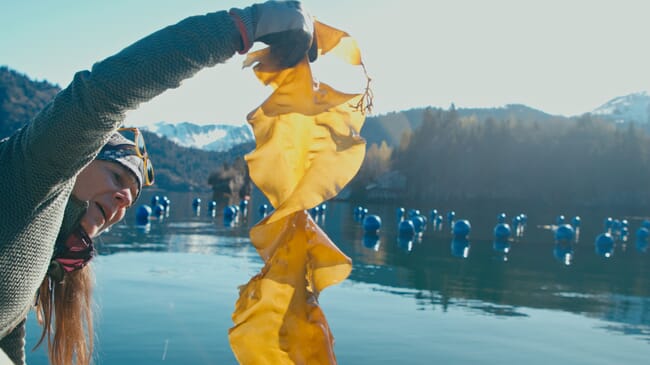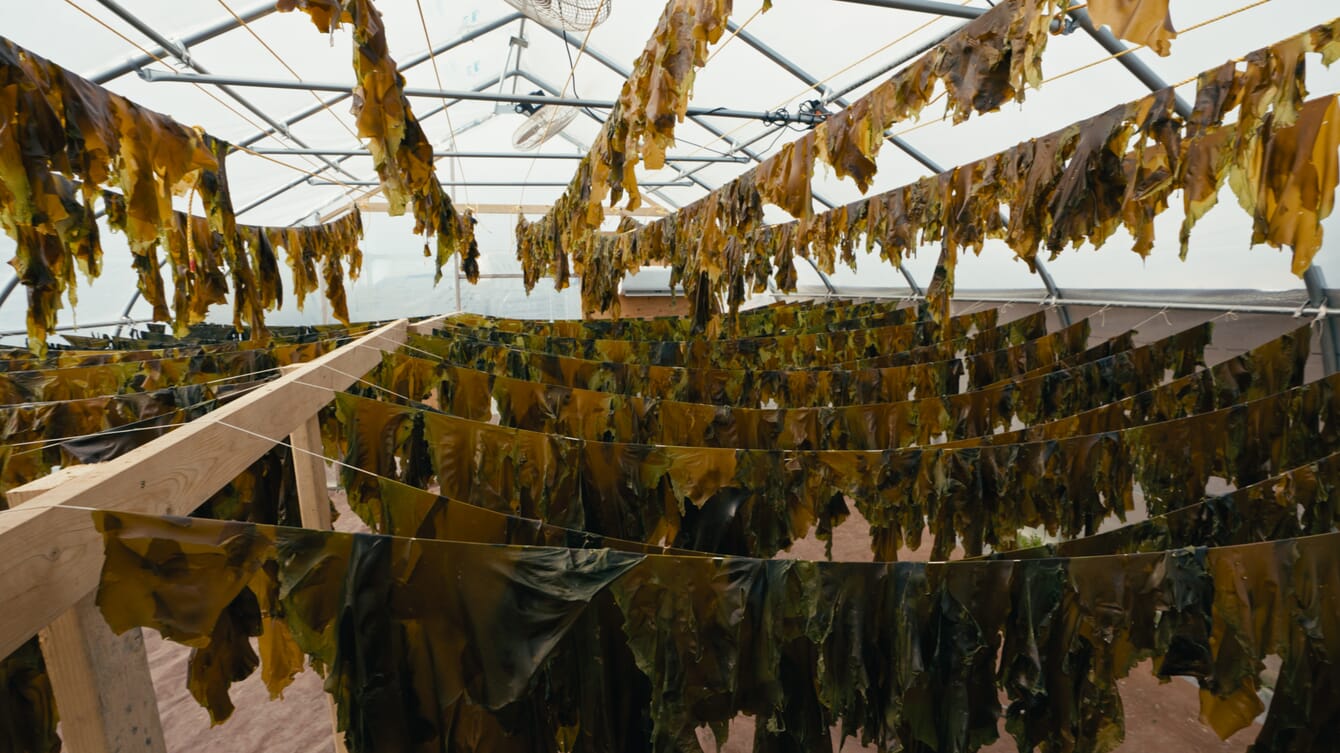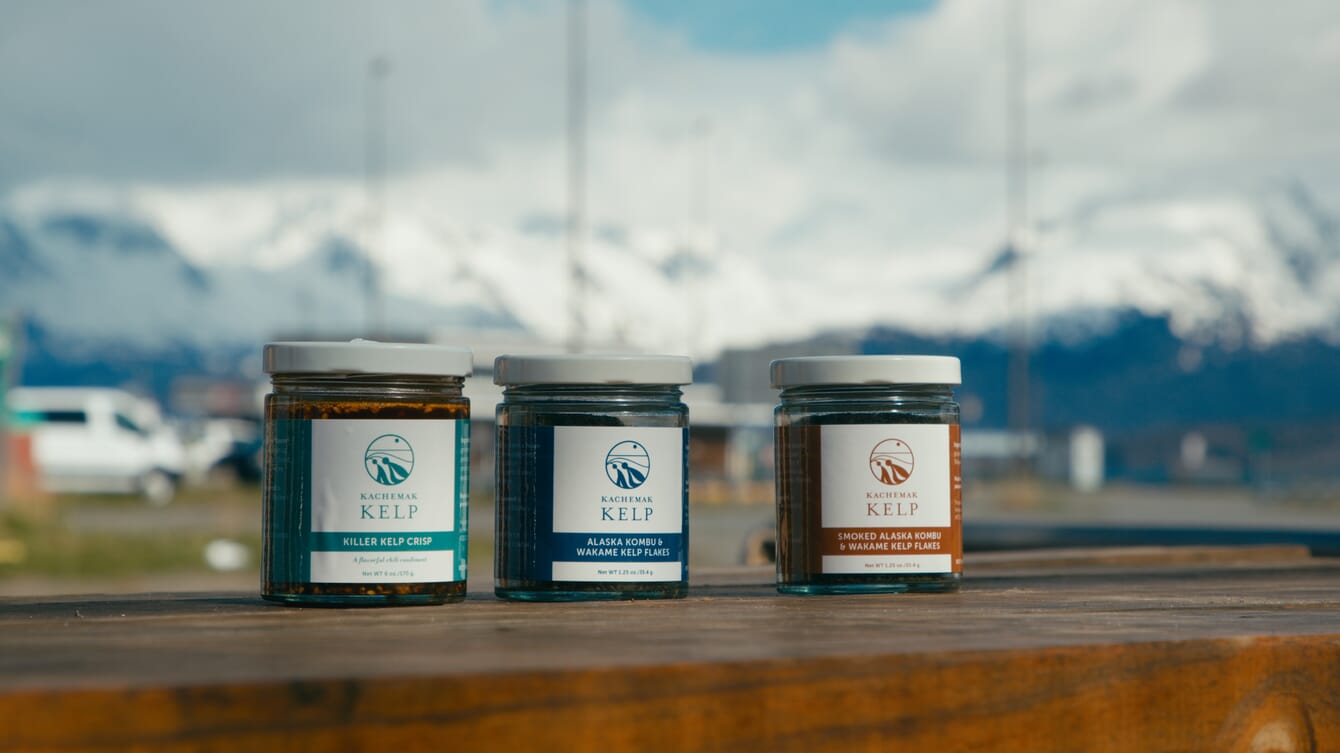
© The Fish Site / Hatch Innovation Services
“For a long time, people came here to Alaska and looked to fishing as the way to make a living on the water. Well, mariculture provides a different way,” muses Evie Witten of Ebb Tide Ocean Farm and the Kachemak Kelp Hub in Homer, Alaska.
“I'm an ecologist and I'm interested in addressing climate change conundrum in regenerative ways. Kelp is good because it provides both a source of food and biomass and can be grown in ways that are beneficial for coastal ecosystems and communities,” she adds.
Forming extensive underwater forests, the 112-known kelp species are among the fastest-growing lifeforms on Earth, growing up to two feet a day. As they grow fast and absorb copious amounts of carbon dioxide, they help to limit climate change and buffer ocean acidification.
The city of Homer on Kachemak Bay has long been a commercial fishing hub for salmon, cod and halibut. Mariculture came later, in the form of oyster and mussel farms.
“Recently though, there were a number of us that started growing kelp. I was a commercial fisher before becoming a farmer,” Witten observes.
The Alaskan mariculture scene has had a much-needed boost, thanks to a $49 million grant from the Southeast Conference (SEC), via the Build Back Better Fund.
“It's provided a number of people like us with funding to help develop the infrastructure needed to build up the local mariculture industry,” Witten reflects.
Kachemak Kelp Hub is an applied research centre that addresses the challenges of processing and marketing farm-grown kelp from Kachemak Bay and nearby Cook Inlet.
“Kathryn Carovano from Saltwater Inc and my firm, Regeneration North, established the Kachemak Kelp Hub to work with a group of relatively small farms here, including Ebb Tide Ocean Farm which my family and I own and operate. The Kelp Hub is a proof-of-concept for community-scale production, we’re processing sugar and ribbon kelp, plus a bit of wild set kelp, developing value-added products and exploring broader markets . Our work is confirming that If Alaska wants to scale up though, we’ll need to increase processing efficiency, develop additional markets and farm more types of kelp to offer a more diversified product line,” Witten explains.

Among the biggest challenges for kelp in Alaska, she says, is to get the seaweed into a form that’s easily marketable.
“Once we get the freshly-harvested kelp, we store them in bins of cold, oxygenated saltwater. We then begin processing by drying whole blades of kelp inside our high tunnel dryer, which we modified with several types of fans, an air-source heat pump and a dehumidifier. We drape the blades in rows, like clothes drying on a clothesline. It usually takes one full day to dry a batch of kelp, or sometimes up to two days depending on the weather and humidity. We’re also experimenting with other preservation techniques, like salting and smoking,” Witten explains.
It's a labour- and energy-intensive process.
“Drying in a high tunnel’ could be a good fit for small, individual operators, but since it’s inefficient, it’s just not compatible with community- or industrial-level production,” she reflects. “We and others in Alaska are looking for more efficient drying methods and other ways to stabilize large quantities of kelp during our short harvest season.”

© The Fish Site / Hatch Innovation Services
Kachemak Kelp Hub is also working hard to connect to markets and develop new kelp products.
“We currently offer everything from whole leaves to milled kelp. We’re selling some through local outlets, but most is sold to other businesses that are using kelp as an ingredient. The applications are limitless – from food, nutraceuticals and cosmetics to fertiliser alternatives,” says Witten.
And there are numerous challenges in marketing to still overcome.
“It’s a matter of creating or finding demand. To sell to other companies that use kelp in their products, we’ve got to know how they want it stabilised post-harvest so we can develop smart processing systems. For example, do they want dried or frozen kelp for food products, or do they want it stabilized with heat or acid to make a plant biostimulant? “
Witten’s team has come up with a cool line of condiments and kelp seasonings for food preparation.
“We're working with local chefs to incorporate some of our salted kelp in their menus, a big hit. We’re also experimenting with developing soil amendments and plant biostimulants for the garden and agriculture sectors. We're always trying to connect with existing markets while stimulating local interest in new products and novel uses for kelp,” she observes.
Witten hopes to expand their capacity and knowhow for kelp processing while garnering traction for their growing number of products.
“Kelp farms could provide great jobs and are a really fitting new industry for coastal Alaska – especially if we want to address climate change by growing regenerative crops that have many uses,” she reflects.
The research that groups like Kachemak Kelp Hub is spearheading might help to secure the future of Alaska’s fledgling seaweed farms. We sure hope they grow as fast as kelp does.
*This article is part of a project commissioned by the SEC to highlight the region's mariculture sector. To learn more about the sector visit https://alaska.seaweedinsights...

© The Fish Site / Hatch Innovation Services







